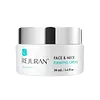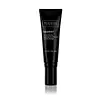What's inside
What's inside
 Key Ingredients
Key Ingredients

 Benefits
Benefits

 Concerns
Concerns

 Ingredients Side-by-side
Ingredients Side-by-side

Water
Skin ConditioningCamellia Sinensis Leaf Extract
AntimicrobialRubus Fruticosus Leaf Extract
MaskingChamomilla Recutita Flower Extract
MaskingNeopentyl Glycol Diethylhexanoate
EmollientEchinacea Angustifolia Meristem Cell Culture
Skin ConditioningSodium Hyaluronate
HumectantCyclopentasiloxane
EmollientGlycol Distearate
EmollientStearic Acid
CleansingCetearyl Alcohol
EmollientPalmitoyl Tripeptide-4
Skin ConditioningPalmitoyl Tripeptide-5
Skin ConditioningTrifluoroacetyl Tripeptide-2
Skin ConditioningCetyl Alcohol
EmollientButyrospermum Parkii Butter
Skin ConditioningIsostearyl Isostearate
EmollientCetyl Stearate
EmollientTocopherol
AntioxidantHydrolyzed Dna
Skin ConditioningAllantoin
Skin ConditioningPanthenol
Skin ConditioningCaprylic/Capric Triglyceride
MaskingAcrylates/C10-30 Alkyl Acrylate Crosspolymer
Emulsion Stabilising1,2-Hexanediol
Skin ConditioningEthylhexylglycerin
Skin ConditioningWater, Camellia Sinensis Leaf Extract, Rubus Fruticosus Leaf Extract, Chamomilla Recutita Flower Extract, Neopentyl Glycol Diethylhexanoate, Echinacea Angustifolia Meristem Cell Culture, Sodium Hyaluronate, Cyclopentasiloxane, Glycol Distearate, Stearic Acid, Cetearyl Alcohol, Palmitoyl Tripeptide-4, Palmitoyl Tripeptide-5, Trifluoroacetyl Tripeptide-2, Cetyl Alcohol, Butyrospermum Parkii Butter, Isostearyl Isostearate, Cetyl Stearate, Tocopherol, Hydrolyzed Dna, Allantoin, Panthenol, Caprylic/Capric Triglyceride, Acrylates/C10-30 Alkyl Acrylate Crosspolymer, 1,2-Hexanediol, Ethylhexylglycerin
Water
Skin ConditioningGlycerin
HumectantTricaprylin
MaskingCetyl Esters
EmollientCanarium Indicum Seed Oil
Skin ConditioningCocos Nucifera Fruit Extract
EmollientC12-15 Alkyl Benzoate
AntimicrobialGlyceryl Stearate Citrate
EmollientCetearyl Alcohol
EmollientDimethicone
EmollientSqualane
EmollientGlyceryl Stearate
EmollientPEG-100 Stearate
Methylsilanol Carboxymethyl Theophylline Alginate
Skin ConditioningHordeum Distichon Extract
Skin ProtectingYeast Extract
Skin ConditioningSantalum Album Extract
CleansingPrunus Amygdalus Dulcis Seed Extract
Skin ConditioningPhellodendron Amurense Bark Extract
Skin ConditioningPalmitoyl Tripeptide-5
Skin ConditioningLauryl Lactate
EmollientSteareth-10
EmulsifyingCeramide Ng
Skin ConditioningDihydromyricetin
Skin ConditioningPalmitoyl Tetrapeptide-7
Skin ConditioningEnteromorpha Compressa Extract
Skin ProtectingTripleurospermum Maritimum Extract
Skin ProtectingPalmitoyl Dipeptide-5 Diaminobutyroyl Hydroxythreonine
Skin ConditioningBambusa Vulgaris Leaf/Stem Extract
HumectantSteareth-20
CleansingHydroxyethyl Acrylate/Sodium Acryloyldimethyl Taurate Copolymer
Emulsion StabilisingPalmitoyl Hexapeptide-12
Skin ConditioningPisum Sativum Extract
Skin ConditioningTocopherol
AntioxidantPolysorbate 60
EmulsifyingButylene Glycol
HumectantGlucosamine Hcl
Tetrahexyldecyl Ascorbate
AntioxidantPEG-10 Phytosterol
EmulsifyingTetradecyl Aminobutyroylvalylaminobutyric Urea Trifluoroacetate
Skin ConditioningTriethanolamine
BufferingCaprylyl Glycol
EmollientTribehenin
EmollientDiazolidinyl Urea
PreservativeCarbomer
Emulsion StabilisingDisodium EDTA
Xanthan Gum
EmulsifyingIodopropynyl Butylcarbamate
PreservativePotassium Sorbate
PreservativeMagnesium Chloride
Sodium Benzoate
MaskingSorbic Acid
PreservativeParfum
MaskingWater, Glycerin, Tricaprylin, Cetyl Esters, Canarium Indicum Seed Oil, Cocos Nucifera Fruit Extract, C12-15 Alkyl Benzoate, Glyceryl Stearate Citrate, Cetearyl Alcohol, Dimethicone, Squalane, Glyceryl Stearate, PEG-100 Stearate, Methylsilanol Carboxymethyl Theophylline Alginate, Hordeum Distichon Extract, Yeast Extract, Santalum Album Extract, Prunus Amygdalus Dulcis Seed Extract, Phellodendron Amurense Bark Extract, Palmitoyl Tripeptide-5, Lauryl Lactate, Steareth-10, Ceramide Ng, Dihydromyricetin, Palmitoyl Tetrapeptide-7, Enteromorpha Compressa Extract, Tripleurospermum Maritimum Extract, Palmitoyl Dipeptide-5 Diaminobutyroyl Hydroxythreonine, Bambusa Vulgaris Leaf/Stem Extract, Steareth-20, Hydroxyethyl Acrylate/Sodium Acryloyldimethyl Taurate Copolymer, Palmitoyl Hexapeptide-12, Pisum Sativum Extract, Tocopherol, Polysorbate 60, Butylene Glycol, Glucosamine Hcl, Tetrahexyldecyl Ascorbate, PEG-10 Phytosterol, Tetradecyl Aminobutyroylvalylaminobutyric Urea Trifluoroacetate, Triethanolamine, Caprylyl Glycol, Tribehenin, Diazolidinyl Urea, Carbomer, Disodium EDTA, Xanthan Gum, Iodopropynyl Butylcarbamate, Potassium Sorbate, Magnesium Chloride, Sodium Benzoate, Sorbic Acid, Parfum
Ingredients Explained
These ingredients are found in both products.
Ingredients higher up in an ingredient list are typically present in a larger amount.
Cetearyl alcohol is a mixture of two fatty alcohols: cetyl alcohol and stearyl alcohol. It is mainly used as an emulsifier. Emulsifiers help prevent the separation of oils and products. Due to its composition, it can also be used to thicken a product or help create foam.
Cetearyl alcohol is an emollient. Emollients help soothe and hydrate the skin by trapping moisture.
Studies show Cetearyl alcohol is non-toxic and non-irritating. The FDA allows products labeled "alcohol-free" to have fatty alcohols.
This ingredient is usually derived from plant oils such as palm, vegetable, or coconut oils. There is debate on whether this ingredient will cause acne.
Due to the fatty acid base, this ingredient may not be Malassezia folliculitis safe.
Learn more about Cetearyl AlcoholThis synthetic peptide is created from lysine, valine, and palmitic acid.
According to the manufacturer, in-vitro studies show tissue growth and collagen synthesis. Another in-vivo study found 60 volunteers saw a significant reduction in wrinkles after 84 days.
Due to its palmitic acid base, this peptide may not be fungal-acne safe.
Learn more about Palmitoyl Tripeptide-5Tocopherol (also known as Vitamin E) is a common antioxidant used to help protect the skin from free-radicals and strengthen the skin barrier. It's also fat soluble - this means our skin is great at absorbing it.
Vitamin E also helps keep your natural skin lipids healthy. Your lipid skin barrier naturally consists of lipids, ceramides, and fatty acids. Vitamin E offers extra protection for your skin’s lipid barrier, keeping your skin healthy and nourished.
Another benefit is a bit of UV protection. Vitamin E helps reduce the damage caused by UVB rays. (It should not replace your sunscreen). Combining it with Vitamin C can decrease sunburned cells and hyperpigmentation after UV exposure.
You might have noticed Vitamin E + C often paired together. This is because it is great at stabilizing Vitamin C. Using the two together helps increase the effectiveness of both ingredients.
There are often claims that Vitamin E can reduce/prevent scarring, but these claims haven't been confirmed by scientific research.
Learn more about TocopherolWater. It's the most common cosmetic ingredient of all. You'll usually see it at the top of ingredient lists, meaning that it makes up the largest part of the product.
So why is it so popular? Water most often acts as a solvent - this means that it helps dissolve other ingredients into the formulation.
You'll also recognize water as that liquid we all need to stay alive. If you see this, drink a glass of water. Stay hydrated!
Learn more about Water